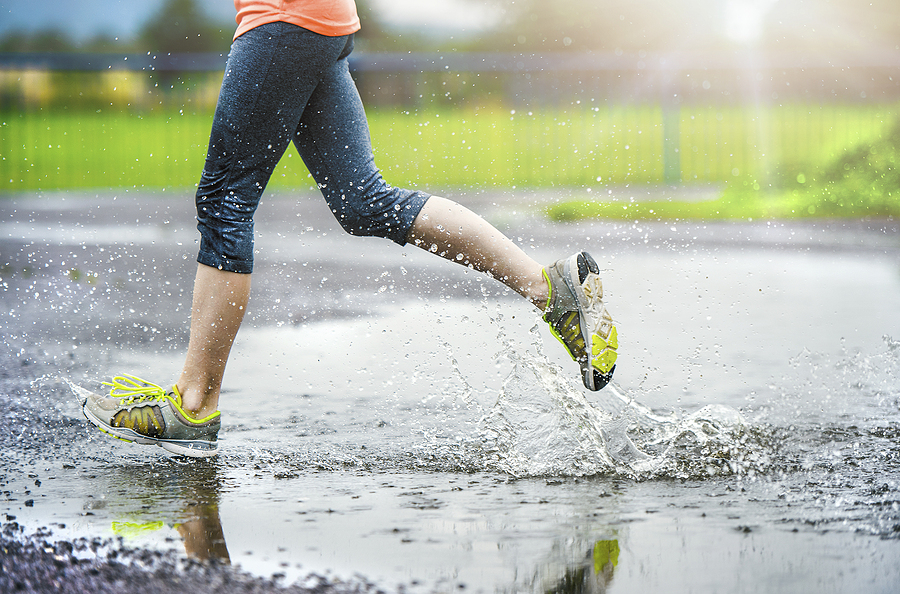Can Running On Water Like The Movies Be Possible In Reality?

Mankind has always pondered on the reality of physics, such as the possibility of travelling at light speed. Running on water has been something that people have tried to replicate, from superhero movies to random social media challenges.
After scouring through the internet, we found the answer to the question in the title. The secret to running on water, in reality, is known as the Non-Newtonian Fluid. Without further ado, let us dive deep into the physics behind it.
Some useful terms associated with fluid dynamics
Before understanding the significance of non-Newtonian fluids, we first need to understand these three key terms: strain, stress, and viscosity.
• Strain: Strain occurs as a result of applied stress. It is the measurement of the level of deformation in the given fluid in the direction of the applied force, divided by its original dimensions.
• Stress: Stress is measured as the force per unit area applied to the given fluid.
• Viscosity: The viscosity of the fluid is measured by the amount of resistance its flow generates. It occurs as a result of the relative motion between the fluid’s various layers. Hence, the thicker the fluid’s viscosity, the slower it flows.
The abnormal behaviour of strain and stress, combined with viscosity within a non-Newtonian fluid, is what sets it apart from other types of fluids.
Newton’s law of viscosity
Newton’s law of viscosity is what defines the fluid’s characteristic behaviour. It states that stress is directly proportional to the velocity gradient of the two fluids’ adjacent layers.
Hence, fluids that obey the law are defined as Newtonian fluids. They maintain the same level of viscosity even when stress is applied to them. Examples of Newtonian fluids are mineral oil, alcohol, and water.
Non-Newtonian fluids, on the other hand, get their name because they do the opposite — their viscosity changes when stress is applied and displays abnormalities in their state of matter. Examples of non-Newtonian fluids are paint, ketchup, and quicksand.
Is it possible to walk or run on a non-Newtonian fluid?
Having understood what non-Newtonian fluid is all about, let us try to contemplate its behaviour and the reason behind it.
Since non-Newtonian fluid does not have a constant viscosity, its state of matter will change towards a temporary liquid or solid when stress is applied. As soon as you remove the stress factor, it restores back to its original state of matter.
Hence, when you apply force on a non-Newtonian fluid when you run across it, the fluid will technically turn into a temporary solid state. As a result, it is possible to walk or run on a non-Newtonian fluid. However, the catch is that you have to run really fast while keeping your footsteps as light as possible.
Types of Non-Newtonian fluids
The thing about these fluids is that there has not been a complete understanding of their molecular behaviour. Hence, with our present knowledge, Non-Newtonian fluids are divided into four categories:
1. Dilatant
When stress is applied to this type of non-Newtonian fluid, its viscosity increases. However, it is time-independent, which means that its viscosity will increase according to the amount of stress applied. And as long as stress is applied, its viscosity is maintained.
An example of a dilatant type non-Newtonian fluid is Oobleck, a mixture of cornstarch and water. As soon as pressure is exerted on Oobleck, it turns from liquid to solid.
2. Psuedoplastic
This type of non-Newtonian fluid behaves opposite the dilatant type, which means the more stress it receives, the less viscous it becomes. An example of a pseudoplastic type of non-Newtonian fluid is ketchup.
3. Rheopectic
This type of non-Newtonian fluid is similar to the dilatant type, except that its viscosity increases with time.
An example of a rheopectic type non-Newtonian fluid is cream. Initially, nothing happens when you first stir it. However, the longer you stir, the thicker the cream becomes.
4. Thixotropic
This type of non-Newtonian fluid behaves opposite the rheopectic type, which means the more stress is applied, the less viscous it becomes.
An example of a thixotropic type of non-Newtonian fluid is honey. The longer you stir honey, the more it slowly turns into a more liquid state.
Conclusion
With its unique properties, non-Newtonian fluids can be applied in various industrial applications, from aerospace propellants to armoured spacesuits and bodysuits. It is a clear example of a science concept that has been translated into reality.
Here at Physics Tuition, we take our students’ physics knowledge to the next level. With an experienced tutor, you are able to chase your physics dream and who knows? You might be the next person to play a crucial role in mankind’s future! Contact us to find out more about our classes!